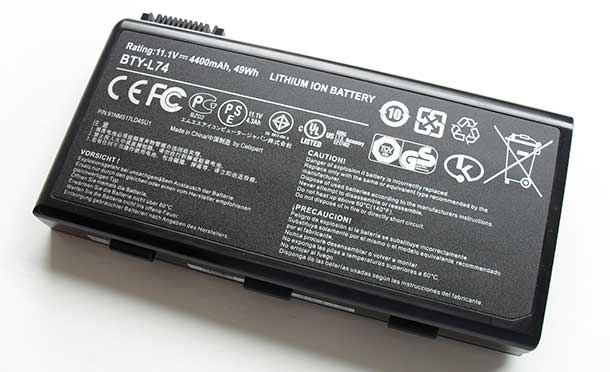Author: Dr James Edmondson, Research Director at IDTechEx
2025 is set to be a strong year for electric vehicle (EV) markets. China has continued its strong growth, and tightening CO2 regulations in Europe will drive greater EV adoption. Despite the large increase in EV adoption, EV battery designers still face a great deal of challenges. For material players within the EV supply chain, there are several routes to supporting EV battery designers with these challenges and differentiating their offerings. IDTechEx’s report on “Materials for Electric Vehicle Battery Cells and Packs 2025-2035: Technologies, Markets, Forecasts” finds that demand for pack-related materials in 2035 will be 3 times its 2024 demand, with priorities shifting.
This article covers the primary and secondary targets for EV battery designers and some of the ways that materials suppliers can support them.

Despite energy density improvements, huge growth is predicted for battery cell and pack materials. Source: IDTechEx – “Materials for EV Battery Cells and Pack 2025-2035: Technologies, Markets, Forecasts”
Primary priorities: Costs, range, and safety
Whilst every OEM will be different and have its own priorities, the primary focuses of most will be lowering costs, simplifying manufacturing, battery safety, and energy density/vehicle range.
The cells and choice of cathode chemistry will have the largest impact on costs, but battery designers aim to remove as many other materials from the pack as possible. This has resulted in modern battery designs using 50% less materials around the cells than designs deployed in 2015 and 2016 (according to IDTechEx research). This is thanks to innovations like cell-to-pack and cell-to-body/cell-to-chassis, but even within modular designs, materials have declined in intensity.
With material intensity per vehicle decreasing, for material suppliers, it is about supplying the right materials. Typically, this means materials that provide multiple functions at a competitive price. A single material may be more costly, but this can be a significant benefit if it is less costly than the two or three materials it replaces.
A key example is thermal interface materials (TIMs). In cell-to-pack designs, the TIM transitions from thicker bondline and heavier gap fillers towards thinner and lighter thermally conductive adhesives, these also provide structure as well as thermal conductivity.
Another example is polymer coolant channels for thermal management, where layers of TIM and metal coolant channels could be replaced with an expandable polymer channel that conforms to the cells and eliminates the need for a TIM inside wall-cooled cell applications.
Safety is also critical and starts at the cell level. However, with regulations evolving, it is becoming increasingly necessary to have dedicated materials to prevent or delay thermal runaway propagation. These come in several forms and can have various functions, from aerogels that provide excellent thermal insulation, to intumescent polymers that provide fire protection and can be used to make structural components. Many of these fire protection materials can be costly and hence having them provide multifunctionality and replace multiple other materials is a huge benefit.
Secondary priorities: Life cycle, sourcing, and sustainability
In addition to the priorities set out above, there are several other areas where IDTechEx believes suppliers can differentiate, given performance and cost targets can be met. These fall under sustainability, CO2 footprint, material sourcing, and end-of-life disassembly. Some OEMs are making this more of a priority than others, but as the EV market continues to grow, these factors will be important in ensuring that EVs are the “greenest” they can be.
As part of EU regulations, all batteries will require a passport that includes information regarding CO2 footprint. Whilst the cell materials will be a larger contributor than pack materials, that’s not to say that pack materials should be ignored. As well as the feedstocks for the materials, having them produced more locally can be beneficial for CO2 impact, and a more secure supply chain for OEMs.
Multiple studies are now showing that EV batteries will last longer than many expected however, there will be a point where the battery is no longer viable for use in an EV. At this point, the battery may be recycled or used in a second life application (such as stationary storage). Either way, it becomes important that a battery can be disassembled to repurpose the cells into a new pack for a second application, or improve the recovery rate of critical materials during recycling.
Many of the modern cell-to-pack battery designs are very difficult to dismantle in a cost-effective way; this leads to increased time and labor for companies dealing with an end-of-life battery. For this reason, material suppliers are starting to offer more options that can aid in this process. For example, adhesives that can be debonded through temperature, solvents, electric current, and/or ultrasound. These are not often used due to the increased cost and the lack of infrastructure relating to who will have to deal with the battery at end-of-life, but this is becoming another method of differentiation, albeit behind the primary concerns.
The automotive market is notoriously difficult to enter with a strong focus on cost reduction, therefore any differentiation that materials suppliers can provide will aid in success in the EV market. IDTechEx’s report, “Materials for EV Battery Cells and Packs 2025-2035: Technologies, Markets, Forecasts” provides analysis and forecasting for trends within key cell and pack materials categories including nickel, cobalt, aluminum, manganese, phosphate, electrolyte, graphite, silicon, iron, copper, binder, separator, and conductive additives, steel, copper, glass fiber reinforced polymer, carbon fibre reinforced polymer, thermal interface material, fire protection material, cold plates, coolant hoses, electrical insulation, and pack seals.
To find out more about this IDTechEx report, including downloadable sample pages, please visit www.IDTechEx.com/EVBattMat.
For the full portfolio of electric vehicle market research available from IDTechEx, please see www.IDTechEx.com/Research/EV.
About IDTechEx
IDTechEx provides trusted independent research on emerging technologies and their markets. Since 1999, we have been helping our clients to understand new technologies, their supply chains, market requirements, opportunities and forecasts. For more information, contact research@IDTechEx.com or visit www.IDTechEx.com.







